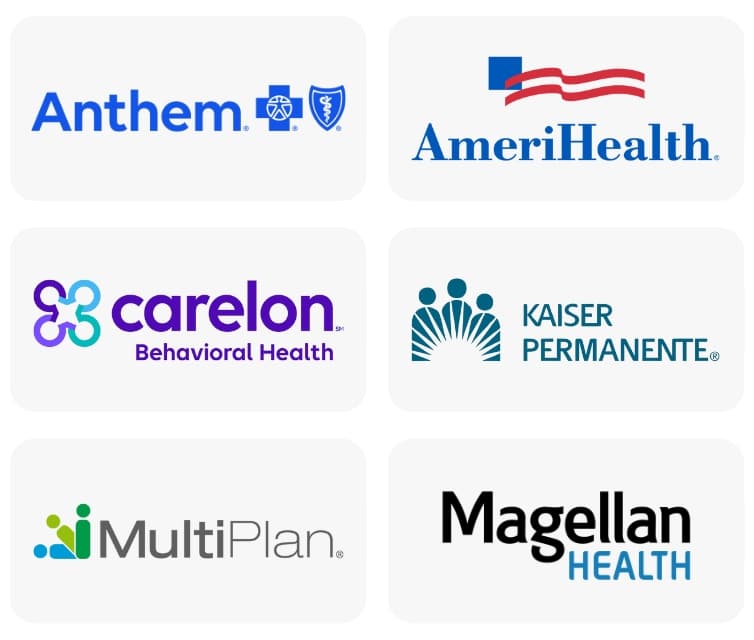With Xanax prescription rates near record highs in the US, more and more people are learning about the dangers of misusing this popular drug. One of the most common forms of Xanax misuse is mixing it with alcohol. This article will go over what happens when you mix Xanax and alcohol.
What Is Xanax?
Xanax is the brand name for alprazolam, a prescription medication in the benzodiazepine class. It’s commonly prescribed to treat anxiety disorders, panic attacks, and sometimes insomnia due to its calming, sedative effects.
The way Xanax works is by enhancing the activity of GABA in the brain. GABA stands for gamma-aminobutyric acid, a neurotransmitter that slows down brain activity and promotes relaxation. Slowing down GABA means slowing down the nervous system, which is why Xanax can help treat anxiety and seizures, but is also why it increases the risk of those things once the body becomes dependent on Xanax.
Because of its fast-acting nature and short half-life, Xanax has a high potential for misuse and addiction. People may begin using it as prescribed but develop a tolerance, requiring higher doses to feel the same effects. This pattern can quickly lead to physical and psychological dependence. Given that alprazolam is the most powerful benzodiazepine, it’s especially important to use it wisely.
Xanax is a Schedule IV controlled substance in the U.S., meaning it has recognized medical use but also the potential for abuse and withdrawal symptoms.
Can You Drink Alcohol on Xanax?
No—drinking alcohol while taking Xanax is extremely dangerous and should be avoided. Both substances are central nervous system (CNS) depressants, meaning they slow down brain activity, impair motor skills, and reduce breathing and heart rate. When taken together, their effects don’t just add up—they multiply, significantly increasing the risk of overdose, respiratory depression, and even death.
Combining alcohol and Xanax can result in:
- Severe drowsiness or unconsciousness
- Slowed or stopped breathing
- Loss of coordination and slurred speech
- Confusion, disorientation, or memory loss
- Blackouts and high risk of accidents or injury
- Increased potential for overdose and coma
Even small amounts of alcohol can dangerously enhance the effects of Xanax, particularly in individuals who are new to the medication or using it without a prescription.
Because both alcohol and Xanax are habit-forming, combining them also increases the risk of polysubstance addiction, making it harder to stop without medical help.
What Happens When You Mix Xanax and Alcohol?
Mixing Xanax and alcohol can have powerful and unpredictable effects on your body and brain, even at low doses. Because both substances act as depressants on the central nervous system (CNS), taking them together can overwhelm the brain’s ability to regulate basic life functions like breathing, heart rate, and consciousness.
Short-term effects may include:
- Extreme drowsiness or passing out
- Blurred vision and slurred speech
- Loss of coordination and motor control
- Confusion, poor judgment, or risky behavior
- Blackouts or complete memory loss
- Slowed or labored breathing
In high doses—or in people with a lower tolerance—mixing alcohol and Xanax can lead to coma, overdose, or death. Many accidental overdoses involving benzodiazepines like Xanax also involve alcohol, making this a particularly lethal pairing.
Even when taken hours apart, residual levels of Xanax in your system can still interact with alcohol, creating delayed but dangerous side effects.
Xanax and Alcohol Interactions
Alcohol and Xanax interact in ways that can significantly depress brain and body function. When taken together, they can cause an overwhelming level of sedation and impair critical functions such as breathing, coordination, and judgment.
Key Xanax-alcohol interactions include:
- Cognitive Impairment: Severe confusion, poor decision-making, and memory blackouts
- Motor Dysfunction: Slowed reflexes, lack of coordination, and increased risk of accidents
- Respiratory Depression: Slowed or shallow breathing, which can be life-threatening
- Loss of Consciousness: Even small amounts can cause sudden unconsciousness when combined
- Heightened Risk of Overdose: Both substances amplify each other’s effects, increasing the likelihood of a fatal outcome
Because both alcohol and Xanax are habit-forming, frequent use together can also accelerate the development of tolerance, dependence, and addiction. These interactions make it especially risky to mix the two, even if the use is occasional or recreational.
"*" indicates required fields
Fill out the form below and one of our admissions team members will reach out to you:
"*" indicates required fields
Xanax and Alcohol Withdrawal: What You Should Know
Withdrawing from either Xanax or alcohol can be dangerous on its own, but combining the two raises the risks significantly. Both alcohol and Xanax act as central nervous system (CNS) depressants, and long-term use can lead to physical dependence, which can cause mood and sleep issues.
When someone stops using Xanax after regular or heavy use, the body goes into a state of hyperexcitability, which can result in severe withdrawal symptoms.
Common Xanax withdrawal symptoms include:
- Intense anxiety or panic
- Insomnia and restlessness
- Tremors and sweating
- Nausea and vomiting
- Rapid heart rate
- Irritability and mood swings
- Seizures (in severe cases)
Many of the symptoms of Xanax withdrawal overlap with alcohol withdrawal. However, alcohol withdrawal features the additional symptom of delirium tremens (DTs), a severe and potentially life-threatening form of alcohol withdrawal. DTs can cause confusion, agitation, hallucinations, fever, and seizures. It typically occurs two to four days after stopping heavy alcohol use and requires emergency medical care.
Because of these risks, never attempt detox from alcohol and Xanax alone. Medical detox in a supervised setting ensures you or your loved one can safely taper off these substances with access to supportive care, monitoring, and medications that ease symptoms.
The Importance of Getting Substance Abuse Treatment
Mixing alcohol and Xanax is an extremely dangerous form of substance abuse that can quickly lead to fatal overdoses. Both substances depress the central nervous system, and combining Xanax and alcohol greatly increases the risk of impaired coordination, slowed breathing, liver damage, and alcohol poisoning. The dangers of mixing alcohol with benzodiazepines like Xanax are well-documented, and the long-term effects on the body can be devastating. Whether someone is struggling with generalized anxiety, panic disorder, or social anxiety and has turned to these substances for relief, the combination poses serious health risks.
Alcohol and Xanax addiction often go hand in hand, and understanding the causes and risk factors is crucial in seeking help. Treatment programs such as inpatient rehab, outpatient treatment, and alcohol detox offer levels of care that address both the physical symptoms and psychological roots of addiction. Cognitive behavioral therapy and other research-based behavioral therapy options are commonly used in these settings. Addiction treatment may also include support from groups like Alcoholics Anonymous and care from a licensed treatment provider. If you or a loved one is experiencing the effects of taking Xanax and alcohol, don’t wait—start your recovery today by exploring personalized care at trusted drug and alcohol addiction treatment centers.
Treatment for Xanax and Alcohol Abuse
When someone is struggling with both Xanax and alcohol abuse, treatment must address both substances simultaneously, as the combination can be especially dangerous. Footprints to Recovery offers affordable and compassionate drug and alcohol rehab in New Jersey, including dual diagnosis treatment — the simultaneous treatment of two disorders.
Because both Xanax (a benzodiazepine) and alcohol are central nervous system depressants, withdrawal can be life-threatening without medical supervision. That’s why treatment typically begins with medical detox, where you’ll be monitored 24/7 by clinical professionals who can manage symptoms and ensure your safety.
After detox, we offer a full continuum of care, including:
- Residential treatment for comprehensive support
- Partial Hospitalization Programs (PHP) and Intensive Outpatient Programs (IOP) for structured yet flexible care
- Individual and group therapy, trauma-informed care, and dual diagnosis treatment
- Medication-assisted treatment (MAT) when appropriate
We understand that recovery is complex and deeply personal. At Footprints to Recovery, we provide research-based treatment in a compassionate, judgment-free environment—helping you reclaim your life, one step at a time.




